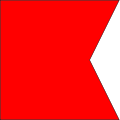Top Qs
Timeline
Chat
Perspective
Ha (kana)
Character of the Japanese writing system From Wikipedia, the free encyclopedia
Remove ads
Ha (hiragana: は, katakana: ハ) is one of the Japanese kana, each of which represent one mora. Both represent [ha]. They are also used as a grammatical particle (in such cases, they denote [wa], including in the greeting "kon'nichiwa") and serve as the topic marker of the sentence. は originates from 波 and ハ from 八.
This article needs additional citations for verification. (December 2009) |
In the Sakhalin dialect of the Ainu language, the katakana ハ can be written as small ㇵ to represent a final h sound after an a sound (アㇵ ah).[1] This, along with other extended katakana, was developed by Japanese linguists to represent sounds in Ainu not present in standard Japanese katakana.
When used as a particle, は is pronounced as わ [wa]. は is also pronounced as わ in some words (e.g. もののあはれ pronounced as mono no aware).
Remove ads
Stroke order
 |
 |

The Hiragana は is made with three strokes:
- A vertical line on the left side with a small curve.
- A horizontal stroke near the center.
- A vertical stroke on the right at the center of the second stroke followed by a loop near the end.

The Katakana ハ is made with two strokes:
- A straight stroke from the top pointing towards the bottom left.
- Another straight stroke going the opposite way, i.e. from the top to the bottom right
The hiragana は is read as "wa" when it represents a particle.
Remove ads
Other communicative representations
| Japanese radiotelephony alphabet | Wabun code |
| はがきのハ Hagaki no "Ha" |
ⓘ |
 |
 |
 | |
| Japanese Navy Signal Flag | Japanese semaphore | Japanese manual syllabary (fingerspelling) | Braille dots-136 Japanese Braille |
- Full Braille representation
Remove ads
See also
References
Wikiwand - on
Seamless Wikipedia browsing. On steroids.
Remove ads


